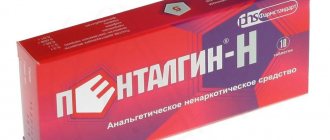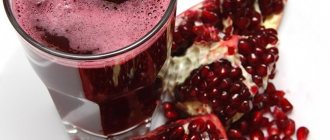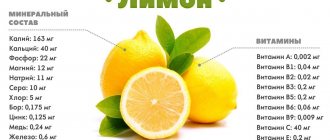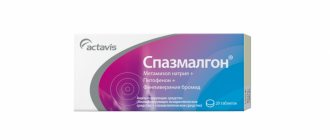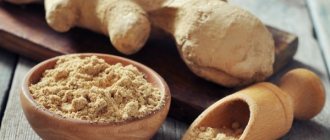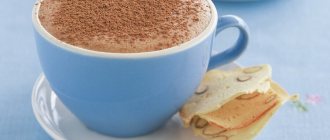Green tea is a drink loved by many. Thanks to its pleasant taste and aroma, people drink tea to improve their mood and get a boost of energy when hot, and when cold to eliminate thirst and restore water balance in the body. Tea leaves are widely used in medicine and cosmetology as a means for weight loss.
However, hypertensive people often wonder how green tea affects blood pressure, whether it is recommended for people with this diagnosis to drink it, or whether it is worth limiting the amount of drink. Today we need to understand the beneficial properties of green tea leaves, methods of preparation and rules for consumption by people with high and low blood pressure.
Beneficial properties of green tea for hypertensive patients
Green tea lowers blood pressure through three main actions:
- Diuretic;
- Anticholesterol;
- Tonic.
Vessels cannot hold an infinite amount of blood. And its amount depends on how much a person drinks and how long the liquid is retained in the body. The more water you drink, the greater your blood volume.
There is excessive pressure on the vascular walls, which leads to an attack of hypertension. Green tea prevents stagnation by quickly removing excess fluid through the kidneys. Accumulated cholesterol also causes high blood pressure. Imagine a hose. The outer diameter remains constant, and the inner diameter gradually decreases as it becomes dirty.
The amount of water supplied remains the same. Then the walls of the hose experience excessive pressure and may even be damaged. Green tea clears the lumens of veins, arteries and capillaries from cholesterol plaques and keeps them healthy.
The tonic effect of the drink is to expand and strengthen blood vessels. Imagine that, with a constant amount of incoming water, the clearance of the hose suddenly increases. Then the pressure drops. And this is what a hypertensive patient needs.
Symptoms of high blood pressure
High blood pressure never goes unnoticed by a person. As soon as it begins to grow, the following symptoms appear:
- headaches localized in the back of the head;
- tinnitus;
- nausea;
- dyspnea;
- dizziness;
- purple complexion.
A short-term increase in blood pressure can occur due to stress or as a result of another psychological shock. In other cases, an increase in tonometer values is a reason for a comprehensive examination. Hypertension most often develops gradually. This manifests itself as fatigue and poor health, as well as sleep disturbances. It is important to measure blood pressure during headaches in order to notice its increase in time.
Beneficial components of green tea
The beneficial properties of the drink are due to its chemical composition:
- Tannin. Gives a characteristic taste and strengthens the walls of blood vessels.
- Thein. This substance is a relative of caffeine. But unlike the latter, it is not harmful to the heart, because it acts gently and is quickly eliminated from the body. But during this time, theine manages to invigorate the body and improve cerebral circulation.
- Catechin is a natural antioxidant. Promotes weight loss, lowering blood sugar and eliminating other factors that cause the development of hypertension.
- Glutamic acid and other amino acids. These are small building blocks of our body, replacing old cells. Regular renewal of vascular tissue leads to maintaining the elasticity of the walls and reducing blood pressure.
Green tea contains vitamins:
- Carotene (provitamin A). Keeps the lumen of blood vessels clear.
- Ascorbic acid (vitamin C). Strengthens the walls.
- Thiamine, riboflavin and niacin (vitamins B1, B2 and B3). Participate in metabolic processes and reduce the amount of cholesterol.
- Tocopherol (vitamin E). Responsible for the elasticity of tissues.
This is interesting! In 1996, an experiment was conducted in China in which two groups of people took part. In the first one, it was allowed to eat unhealthy foods, but it was necessary to drink several cups of green tea. In the second, this drink was prohibited, but the subjects had to adhere to the rules of a healthy diet. As a result of the experiment, it turned out that the condition of the cardiovascular system was better in the first group. Their risk of developing hypertension was reduced by 50% compared to adherents of a healthy lifestyle.
Useful qualities of the drink
The product includes many useful qualities. The most common of them is considered to be antioxidant. Thanks to this, it affects the entire body. Frequent use improves skin quality and general condition. For colds and general poor health, green tea removes harmful compounds from the body, improving metabolism. The product also has an anti-inflammatory effect. It gives energy, eliminates apathy and depression, and relieves sleepiness. Therefore, it is extremely useful to consume it in the morning. Iodine and fluorine present in the composition neutralize heavy metal salts. The diuretic property of the drink eliminates swelling and removes excess water from the body, making the course of diseases of the genitourinary system easier. What inexpensive tablets can be found for high blood pressure, but are effective ? A free way is to drink green tea. It has a beneficial effect on the heart and blood vessels. In small doses, it reduces blood pressure in those who suffer from hypertension, and also reduces the risk of fatty plaques forming on blood vessels, increasing the strength of vascular walls. Iced green tea increases or decreases blood pressure – we’ll find out further.
Possible harm and contraindications
Green tea for hypertension should not be drunk in excessive quantities. Due to the high content of polyphenols, the drink can cause poisoning when consumed in liters. Other consequences of abuse include liver disease from intoxication and urolithiasis.
Contraindications to green tea for hypertensive patients:
- Stones in the kidneys and urinary organs;
- Insomnia;
- Gout;
- Peptic ulcers of the gastrointestinal tract;
- Lactation period;
- Alcohol intoxication.
Attention! To normalize blood pressure, but not harm your health, you need to take 1-3 cups of green tea. This corresponds to 200-600 ml per day.
Types of varieties
Green tea was first produced in China. Today this country produces only elite varieties:
- Xihu Longjing. Hand pressed. Leaves a sweet aftertaste and the aroma is associated with an orchid. The color of the drink is yellow.
- Gunpowder. The curled leaves resemble pellets that “explode” during brewing. Good in combination with mint - just what hypertensive patients need.
- Bilochun. Tea made from tiny young tea leaves collected in early spring. It has a fruity taste and a pronounced floral aroma.
- Yun Woo. The drink is not for everyone due to its astringency and bitter aftertaste.
- Huangshan Maofeng. Tea leaves are newly opened leaves and buds. When brewed, they weaken the floral aroma. They have a nutty flavor.
In Japan, 100% of the tea market is occupied by green varieties. The most popular:
- Sentya. Combines sweet and bitter notes that pair well with Japanese cuisine.
- Rekutya. A variety suitable for daily use. A light citrus aroma complements the berry flavor notes.
- Gyokuro. To grow this type of tea, the bushes are artificially shaded. This creates favorable conditions for the accumulation of large amounts of tannin in the leaves. Namely, this substance strengthens blood vessels, helping to reduce blood pressure.
Georgian green tea is less popular, but in terms of taste it is ready to compete with Chinese and Japanese varieties. What does it cost just to collect “Bouquet of Georgia” and “Extra”. Varieties numbered 115 and 125 are more suitable for daily consumption.
How to choose good tea
To better assess the quality of the tea leaves, buy them in bulk. In doing so, pay attention to:
- Color, which largely determines the quality of green tea. It should be green, but shades can vary from dull to dark olive. In China, the best varieties have a pistachio color and a slight sheen of silver or gold. Do not buy tea that is too dark, because this is a sign of a violation of the production technology. This will affect not only the taste, but also the medicinal properties of the drink.
- Collection period. Find out when the tea leaves were harvested. If in the spring, then you can enjoy a soft taste with a floral, fruity or nutty aftertaste. Autumn leaves are astringent and have a lot of bitterness. Don't buy last year's tea. It can be distinguished by a large number of broken tea leaves from frequent transportation and carrying from place to place.
- Humidity. For high-quality tea it varies between 3-6%. If the indicator is higher, the shelf life of the product decreases. At 20%, the leaves can no longer be used to make a drink, because mold will form on them. This may be hazardous to your health. Dried tea leaves are also not suitable. They will turn to dust when brewing and ruin the taste.
If you decide to buy packaged tea, then the main criteria for choosing will be:
- Integrity of the package and box.
- Availability of a trademark and information about the country of origin and the date of harvest of the tea leaves. The packaging must also indicate: net weight, shelf life and storage conditions.
- Marking. Options: numbered from 1 to 7 (in order of decreasing quality). But the best tea is not designated No. 1, but “Extra.”
Attention! On the shelves you can see flavored green teas next to hibiscus. They are usually beautifully packaged and cost little. But even if the temptation is high, refrain from such a purchase. A good variety does not need flavorings: it already smells pleasant. You will not get any benefit from the drink.
Top best teas to normalize blood pressure
Health problems associated with high or low blood pressure (BP) are a common phenomenon of modern life. Moreover, these diseases today affect not only older people, but also many representatives of the younger generation. This is due to frequent stress at work, domestic troubles, bad habits, poor environment and other negative factors.
Even by a person’s appearance one can guess the nature of the illness that is plaguing him. A red, swollen face, nosebleeds, sweating, and irritability indicate hypertension (high blood pressure). Pale skin, lethargy, apathy, depression, indifference to everything around you are signs of hypotension (low blood pressure). Of course, you can normalize blood pressure with the help of medications, but people with such problems also need to monitor their diet and the fluid they consume. This article will discuss the effect of tea, one of the most popular drinks all over the world, on blood pressure levels.
Black tea
There is an opinion about this drink, beloved by all residents of our country, that it increases blood pressure. This prejudiced attitude has been strengthened in people's minds since Soviet times. At that time, Georgian, Indian or Ceylon tea of very low quality could be purchased in stores. Therefore, in an effort to achieve at least some aroma, more tea leaves were put into the teapot. The result was a drink stronger than usual, which could actually lead to an increase in blood pressure. In addition, every Russian is well acquainted with the term “chifir”. After consuming this highly concentrated brewed tea, mainly common in places of detention, blood pressure not only increases, but exceeds all permissible standards.
Why is this happening?
An increase in blood pressure occurs due to the fact that the blood vessels narrow and the pressure of the blood flow on their walls increases. The heart has to pump blood more intensely. In hypertension, the vessels generally appear as thin tubes due to depletion and loss of elasticity of their walls. Therefore, the main medications for hypertensive patients are vasodilators. In turn, a decrease in blood pressure is caused by the fact that the blood vessels are in a dilated state, which is why the rate of blood circulation in the body slows down. With hypotension, this situation becomes permanent, which leads to disruption of oxygen supply to the heart and brain.
Substances in black tea that affect blood pressure
Black tea contains a large number of different chemical elements that have a direct effect on the tone of blood vessels. Among them, compounds such as tannins, catechins (tannic acids of the phenolic group) and theine (tea caffeine) should be highlighted. They have the ability to reduce the lumen of the vascular walls, which causes an increase in heart rate and, as a result, an increase in blood pressure. The concentration of these substances in tea leaves is quite significant, which is why after drinking a cup of strong black tea, a vasoconstrictor effect occurs and the pressure is maintained at an elevated level for some time. Nevertheless, this drink is enjoyed by everyone: both hypertensive and hypotensive patients.
So who is black tea more beneficial for - people with high or low blood pressure?
There is no clear answer to this question. Two or three cups of a weak drink a day with the addition of a slice of lemon will not only not harm hypertension, but will also calm you down, lift your spirits, and relieve fatigue. But hypotensive people should slightly increase the usual consumption rate of black tea when brewing. To normalize low blood pressure, it is recommended to drink a drink with the addition of a few drops of cognac. A small amount of high-quality alcohol will not have a negative effect on health, and in combination with tea biologically active components it will only invigorate, increase the tone of the body, and eliminate depression.
Green tea
Due to established traditions, this drink is less popular among Russians. If we talk about its effect on blood pressure, then the situation is more complicated. First of all, it should be noted that compared to black tea, it contains a higher caffeine content. Of course, it is much less than in such a tonic drink as coffee. However, this alkaloid still has a specific effect on the condition of blood vessels. The caffeine (theine) of green tea not only causes vasoconstriction and an increase in the frequency of contraction of the heart muscle, but also activates the release of hormones that excite the central nervous system - adrenaline and cortisol. All this leads to increased blood pressure. However, this tonic effect does not last long. After a short time, the effect of caffeine is neutralized by purine compounds, which are its antagonists - xanthine, theobromine, theophylline, etc. As a result, vascular tone returns to normal and blood pressure decreases.
The second important point: there are several hundred varieties of green tea. Each of them has its own unique effect on the body. Some contain only 2% caffeine, others as much as 5%, some have more tannin and catechins, some have less. Therefore, if we consider the consumption of this drink from the point of view of its effect on blood pressure, then it is best to opt for varieties grown and fermented in China. It is no secret that Chinese green teas are considered the most refined and elite in the whole world.
Varieties of green tea used for high blood pressure
For people suffering from high blood pressure, it is recommended to drink teas that have a relaxing and calming effect. Among the many such drinks, the following premium varieties should be highlighted:
- "Feng Yan" ("Eye of the Phoenix");
- “Moli Yu Long Tao” (“Jasmine Dragon Peach”);
- "Hua Long Zhu" (Jasmine Dragon Pearl).
You should also pay attention to green teas from the oolong category:
- "Tie Guan Yin";
- “Nai Xiang Jin Xuan” (“Golden Daylily”);
- "Da Hong Pao" ("Big Red Robe").
All these varieties have the ability to cleanse blood vessels of cholesterol deposits, increasing the lumen and improving the elasticity of their walls. They contain a number of natural substances with complex names that stimulate brain structures responsible for relaxation. These drinks have a mild diuretic effect, which is very important for hypertensive patients who, together with antihypertensive drugs, are forced to take diuretics. Green teas have a calming effect, relieve nervous tension and fatigue, improve concentration, eliminate headaches, normalize sleep and, accordingly, lower blood pressure.
Green tea for low blood pressure
For hypotension, it is better to give preference to green teas with a high content of caffeine (theine) and phenolic compounds (tannin, catechins). These varieties include:
- “Shen-Puer” and “Shu-Puer” (teas from Yunnan province);
- “Longjing” (“Dragon Well”);
- "Kudin" (a drink made from the leaves of the holly tree).
These varieties contain a large amount of tannins and various aromatic compounds that have a tonic effect on the body, as well as antioxidants that fight free radicals, which helps maintain blood vessels in good shape. Invigorating green teas have mild stimulating properties, activate vital processes, saturate the brain with oxygen, clear consciousness, eliminate depression and slightly increase blood pressure, which is what hypotensive people need.
Hibiscus
Tea made from Sudanese rose (hibiscus) petals of a beautiful bright red color is considered an exotic drink for most residents of our country. However, there are also many lovers of the “drink of the pharaohs”. From someone's hand, there is information circulating in print and Internet publications that hot hibiscus increases blood pressure, and cold tea, on the contrary, lowers blood pressure. Biochemical studies have shown that this is an erroneous judgment. Firstly, regardless of the temperature, the drink quickly becomes warm after entering the stomach and is absorbed by the body in this form. Secondly, when discussing the effect of any tea on blood pressure, one should rely on the biologically active substances it contains.
The hibiscus plant contains a large number of different natural compounds that have a beneficial effect on the vascular system. Among the many useful components, flavonoids (anthocyanins), amino acids (as many as 13 items), pectin, potassium ions, vitamins C (ascorbic acid) and P (rutin) predominate. Due to the presence of these substances, the body has a hypotensive effect: blood vessels dilate, the elasticity of their walls improves, blood circulation is stimulated, blood pressure increases and the cardiovascular system is generally strengthened. In addition, this drink has a diuretic effect, reducing sodium levels in the blood. Therefore, according to herbalists and even cardiologists, hibiscus tea is more suitable for people suffering from high blood pressure.
Herbal teas for hypertensive patients
Someone might argue that any brewed drinks based on medicinal herbs are not tea, but infusions. But if we put aside quibbles, it is obvious that the principle of their preparation is identical to traditional tea: when brewing, all these drinks are accompanied by an infusion process.
For hypertension, it is recommended to drink herbal teas, which have a relaxing, sedative effect. The beneficial components that make up the plants must perform the following functions: dilate blood vessels, thin the blood, activate blood circulation, strengthen vascular walls, remove excess fluid from the body, improve the contractility of the heart muscle.
Herbs that lower blood pressure must contain tannins, coumarins, tannins, organic acids, vitamins C, E, P, polyphenols, flavonoids, potassium, and magnesium in sufficient quantities.
First of all, all these requirements are met by drinks brewed with fireweed (willowherb), hawthorn, and lingonberry leaves. It is also very useful for hypertensive patients to drink drinks made from soothing herbal infusions. Plant combinations can be very different, for example:
Option 1: fennel, valerian, mint, chamomile, cumin.
Option 2: hawthorn, hop leaves, motherwort, dried grass.
City residents who do not have the opportunity to collect and prepare medicinal plants can purchase ready-made tea preparations from pharmacies. The most popular among hypertensive patients are the following pharmaceutical herbal teas:
- “Hypotensive herbs” - (hawthorn, mint, black currant, lemon balm, chokeberry);
- “Monastic tea” - (motherwort, oregano, plantain, sweet clover, immortelle, coltsfoot, etc.);
- “Taiga Doctor” - (valerian, panzeria, sweet clover, Kuril tea, horsetail, etc.).
Herbal teas for hypotension
According to statistics, there are significantly fewer people suffering from low blood pressure than hypertensive people. However, hypotensive people also experience serious health problems: asthenia, loss of strength, chronic fatigue syndrome, decreased performance. Hypotension is characterized by a condition in which the tonometer records the blood pressure level within 100/60 mm Hg. and below. The main objectives in the treatment of this disease are: to invigorate a person, increase the tone of blood vessels, enhance cardiac activity, stimulate brain function, restore strength and muscle activity. In this case, drinks that help increase blood pressure can provide significant assistance.
As already noted, the most effective natural tonic is caffeine, present in coffee, strong green or black tea. Drinks based on caffeine-containing plants bring no less benefit to hypotensive people. For example, Paraguayan mate tea or South American tea infused with the leaves or berries of the guarana plant (“Amazon chestnut”).
However, such drinks are unusual and difficult to access for Russians, so it is better to opt for medicinal herbs that grow throughout the vast territory of our country. In particular, reliable natural remedies that stimulate and tonify the body (adaptogens) are:
- Rhodiola rosea (“golden root”);
- Leuzea safflower;
- Schisandra chinensis;
- Eleutherococcus ("Siberian ginseng").
They are famous not for the presence of caffeine, but for their effective vasoconstrictor effect, so necessary for hypotensive patients. These plants are rich in glycosides, alkaloids, essential oils, and triterpene compounds that increase the tone of blood vessels.
Today in the pharmacy chain you can purchase not only alcoholic tinctures and extracts from these plants, but also medicinal teas, which are produced in the form of packaged bags. This is very convenient, since the dose of raw materials used has already been calculated by specialists. Also, in the fight against hypotension, you can achieve a positive effect with the help of herbal tea mixtures.
Pharmacy collection No. 140
Thus, many therapists recommend that hypotensive patients purchase pharmaceutical collection No. 140. It contains: St. John's wort, viburnum, sea buckthorn, elecampane, nettle, tartar, hazel, strawberry, oregano, birch leaves.
Pharmacy collection "Hypotension"
Another popular pharmacy collection is made on the basis of medicinal plants of Altai. It’s called “Hypotonia”. Its composition is diverse: rhodiola rosea, calendula, eleutherococcus, rose hips, leuzea, St. John's wort, tartar, lemon balm, nettle, oregano, elecampane.
To summarize all of the above, the following should be noted: any tea, when brewed correctly, is a natural and safe drink. Some teas lower blood pressure, others increase it, and others have a double effect. At the same time, much depends on the individual characteristics of each organism, so the benefits of this or that tea for hypertension or hypotension can only be assessed through personal experience.
Rules for storing green tea
- Air temperature 17-19 degrees;
- Humidity not higher than 70%;
- The product should not be exposed to sunlight. It is better if there is no light at all.
- There should be no strong-smelling foods nearby, because the tea leaves absorb odors.
- The best storage containers are ceramic or porcelain containers with tight lids.
- It is allowed to use boxes made of juniper, linden or birch.
- Do not store in paper or plastic bags, glass or plastic containers.
- The optimal shelf life is 1 year, maximum 2. Then throw it away: there is no benefit from the old drink.
Brewing rules
To get the maximum benefit and enjoy the taste of the drink, you need to know how to brew green tea correctly:
- Boil the water.
- Warm the teapot over the fire. If you pour tea in a cold container, the drink will instantly lower the temperature by 8-10 degrees. Then the beneficial substances will not be able to be released.
- For every 200 ml add 1 tsp. tea leaves and 1 more “for the teapot”. If your volume is 600 ml, then it will be 3+1=4 spoons.
- Fill with water cooled to 80 degrees.
- Leave the drink for 1-3 minutes and then pour it into cups.
This is interesting! Green tea has the unique ability to change its taste after each brewing. It can be tart at first and then develop floral notes. Therefore, the same tea leaves can be used as many times as long as it gives taste and aroma, but no more than 7-8 times. It is only important to comply with the following condition: each subsequent brewing should begin no later than 10-15 minutes after the previous one.
How to brew?
In order for the drink to be tasty and healthy, you need to brew it for a certain amount of time. If this time is less than 3 minutes, then the increase in pressure will be insignificant. If this time lasts 4-10 minutes, then such a drink can increase blood pressure by more than 20 mm Hg. Art. This is very dangerous for hypertensive patients at stages 2 and 3 of the disease.
Tea that has been steeped for more than 10 minutes is generally not recommended for consumption. It no longer contains useful microelements and vitamins, and there is a lot of caffeine. Therefore, if a person finishes a drink brewed in the morning, then it will not be beneficial.
Scientists have proven that 2-3 cups of the drink throughout the day, brewed in less than 3 minutes, will help keep blood pressure levels normal.
How to drink green tea for hypertension
Green tea is not a medicine. Its mild effect is long-lasting. There will be no effect from drinking the drink once. Requires daily use for 1-2 weeks. Only after this the tonometer will show improvement.
The minimum amount of green tea that a hypertensive person should drink to reduce blood pressure is one cup (200 ml). But you should not drink more than 3-4 cups (600-800 ml) per day, because this can affect the health of internal organs.
Count the amount of fluid consumed per day: it should not be more than 1.5 liters. Otherwise, the pressure in the blood vessels will increase.
Rules for drinking the drink for hypertensive patients
Doctors note that hypertensive patients need to consume about 1.3 liters of fluid per day. But it is also important to take into account liquid soups and juices. Hypertensive patients are not recommended to drink more than 2 cups of tea per day.
Many people know that bergamot has the property of lowering blood pressure, but in store-bought tea the taste of bergamot is achieved due to the flavorings in the composition. Therefore, you should not expect your blood pressure to drop due to this ingredient.
It is also recommended to buy only large-leaf tea, and rinse the leaves in warm water before drinking. In this way, some alkaloids are already neutralized. Also, the effect of caffeine can be mitigated with milk, that is, you can drink tea with it.
Of course, if a person has hypertension, and the blood pressure is currently elevated, then it is better not to drink tea. This can have a detrimental effect on your general condition. Especially at night, you should not drink the drink, as insomnia and excessive excitability may occur. At the same time, hypotensive people with low blood pressure need a cup of strong drink with sugar or honey.
Reviews
Ksenia, 53 years old: I’ve heard for a long time that green tea treats hypertension. With the hope that the problem would stop bothering me, I went to the store and bought the first tea leaves I came across. Imagine my disappointment when the pack was almost finished, and the pressure had never dropped below 140/90. Thanks to my neighbor, who, having learned about my illness, gave me a jar of Japanese Rekucha tea. I drank 3 cups every day, and my blood pressure returned to normal.
Zinaida, 69 years old: Everyone in my family is hypertensive: mom, dad, grandparents, aunts and uncles. Three relatives have already died from strokes. About 30 years ago it was hard for me to realize that a similar fate would await me. But one day I heard on TV that green tea for hypertension and for the prevention of high blood pressure is one of the best remedies. I promised myself: at least one cup a day, but drink it. The result is that, despite heredity, hypertension passed me by.
What does pressure mean - tonometer values
When measuring pressure with a tonometer, a person receives two numerical values. More of them indicates the force with which the heart muscle pumps blood into the bloodstream. Normally, this figure should be from 120 to 135 units.
A lower value on the tonometer indicates the strength of blood movement through the human system at the moment the heart muscle relaxes, that is, at the moment when it does not push blood, but is preparing for the next push. Normally, the so-called lower pressure varies from 75 mm Hg to 90 mm.
In addition, it is important to consider the difference between lower and upper pressure. This indicator should tend to 40. That is, a value of 120/80 mm, when the lower indicator is 40 points less than the upper one, is the norm. If the lower one rises to 90 units, and the upper one drops to 115, serious problems with well-being begin.



